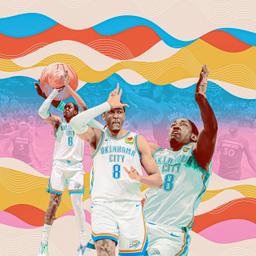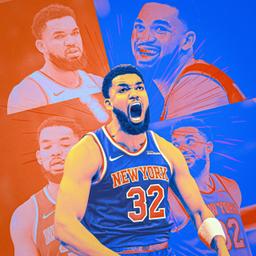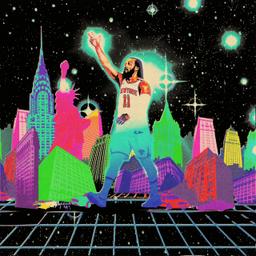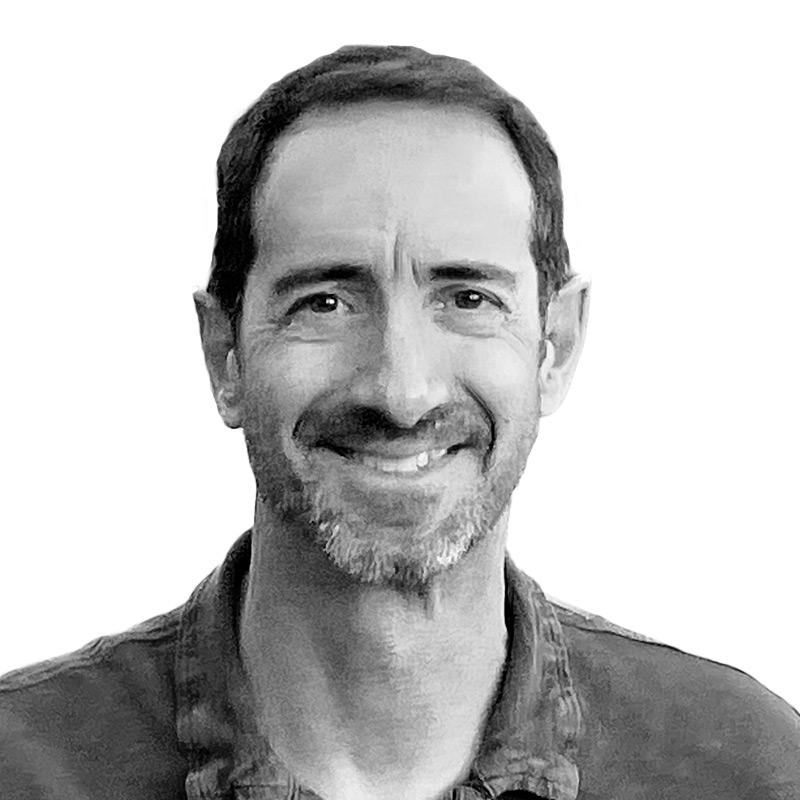
What if you built an NBA title contender … and no one really noticed? What if the process were so gradual, so mundane, so devoid of glitz or fanfare that no one could see the transformation coming? Does it even seem plausible? Could it actually be done?
Well, it can—the Indiana Pacers did it. And, if we’re being honest, no one recognized it until they were actually here, on the precipice of the NBA Finals. The Pacers remain one win away from that stage, having lost to the New York Knicks on Thursday in Game 5 of the Eastern Conference finals. Maybe New York comes back, maybe Indiana holds on. But however this series ends, the Pacers have made a clear declaration this spring: We’re here, and we’re legit. If their 2024 conference finals run seemed a little fluky—and was short-lived, as they got swept by the Boston Celtics—their 2025 run has left little doubt that the Pacers belong among the elite.
And if there’s still some hesitancy to believe in them? Well, perhaps it’s because the Pacers weren’t built like, and don’t really look like, the NBA contenders we’re used to seeing. There’s no perennial MVP candidate leading this group, no marquee name with a signature shoe. Nor did they ever make a signature, splashy transaction—no blockbuster trade, no blue-chip draftee, no break-the-internet free agent signing.
The Pacers’ rise has been fueled instead by a swaggering guard whose most recent claim to fame was getting labeled “most overrated” in a player poll, and a costar who had seemingly peaked years ago. Tyrese Haliburton does, in fact, have a ton of talent to go with that swagger. Pascal Siakam has an elite skill set and a 2019 championship ring from his time in Toronto. But neither one profiles as your typical NBA superstar—the kind who are perennially entrenched in top-10 lists and MVP debates.
The Pacers are a different kind of contender—emblematic of this very different era of the NBA.
The age of the superteam is over. There are no gaudy Big Threes anymore (not any good ones, anyway), thanks to a new salary-cap system that makes it nearly impossible to stockpile established stars. There’s no Ubuntu Celtics, no Miami Superfriends, no Warriors Death Lineup. And, as has now been noted endlessly, the NBA will soon crown a seventh different champion in seven years.
In a time of unparalleled parity, there’s no one way to build a title contender. Or, to borrow a bit of Buddhist philosophy, there are now many paths to the same goal. Witness this season’s conference finalists:
- The Oklahoma City Thunder, who won the Western Conference championship, are the most conventional contender, with the reigning MVP (Shai Gilgeous-Alexander), two young costars who were drafted by the team (Jalen Williams and Chet Holmgren), and a mix of homegrown and imported talent. The Thunder were built the old-fashioned way, through losing and the lottery, though Holmgren (drafted second in 2022) is their only top-three pick. Much of their rotation is filled with lower picks and undrafted players. Their most significant free agent signing was center Isaiah Hartenstein last summer.
- The Minnesota Timberwolves, who lost to the Thunder, also followed a fairly familiar path to contention: They lost a lot, got Anthony Edwards with the no. 1 pick in 2020, made a massive trade for former Defensive Player of the Year Rudy Gobert in 2022, and flipped another no. 1 pick, Karl-Anthony Towns, for two more rotation players (Julius Randle and Donte DiVincenzo).
- The Knicks are here thanks to their All-NBA point guard, Jalen Brunson, along with his costar Towns, and a cast of high-level role players, most of them acquired via trade. In fact, most of the Knicks' roster was imported, which fits the old image of the NBA, in which wealthy big-market teams spent wildly to poach other teams’ stars. And yet the Knicks actually have more in common with the small-market Pacers and Thunder than they do with, say, the Los Angeles Lakers … or the free-spending Knicks of the early 2000s.
Brunson was not a superstar, or even a just-plain star, when the Knicks signed him away from Dallas as a free agent in 2022. He was a second-round pick. He’d never made an All-Star team. He didn’t get a max deal—though his four-year, $104 million contract was initially viewed as an overpay. No, he was simply a promising young player who had yet to blossom.
The same could be said of Gilgeous-Alexander, the no. 11 pick of the 2018 draft, who became the centerpiece of the 2019 trade that sent Paul George from Oklahoma to the Los Angeles Clippers. Sure, many scouts and executives were high on him, but no one forecast a future MVP.
And the same could be said of Haliburton, the no. 12 pick in 2020, who had shown flashes of greatness during his time with the Kings but was hardly viewed as a transformative superstar when Indiana acquired him, in a swap for two-time All-Star Domantas Sabonis. Haliburton was 21 at the time, a reedy combo guard with a funky jumper, playing for a losing team in Sacramento. The Pacers’ trade last season for Siakam, who last made an All-NBA team in 2022, was also praised but hardly viewed as a linchpin to title contention.
In fact, a casual fan perusing the transaction wire in recent years might have mistaken the Pacers for a team aiming for mere competency through a series of seemingly modest moves that, in real time, would have elicited a respectful nod.
Oh, the Pacers got Aaron Nesmith? Nice. They’re taking a flier on Obi Toppin? Cool. Drafting Bennedict Mathurin at no. 6? Makes sense. Oooh, they just traded for Siakam to play with Haliburton? OK, good call.
Steady, methodical, decidedly unflashy. This has always been the Pacers’ way, whether the front office was being run by Donnie Walsh, Larry Bird, or, since 2017, Kevin Pritchard. Like most small-market teams, the Pacers are not generally a destination for top free agents or disaffected stars demanding trades. But they also don’t tank—a consistent edict from longtime owner Herb Simon.
“Herb [said] that he didn’t really want to start at the bottom,” Pritchard told me in April 2018. “He didn’t want to break it down, tear it up, and he didn’t want to do that to this community.”
At the time, the Pacers were enjoying a surprise renaissance, winning 48 games behind Sabonis and Victor Oladipo—the two players Pritchard had acquired by trading George to Oklahoma the prior summer. George, a perennial All-Star, had asked out, leaving Pritchard with few options. And since Simon wouldn’t allow a total teardown, Pritchard made a deal for two promising young players rather than a cache of draft picks.
As it happens, that admittedly reluctant deal was the first step in the Pacers’ spectacular rise. Sabonis, of course, was eventually flipped for Haliburton. Oladipo was traded to Houston in 2021, in a multiteam trade that brought back Caris LeVert—whom the Pacers traded again the next year, in a deal that netted the draft picks that later became Andrew Nembhard and Ben Sheppard.
Along the way, the Pacers acquired Malcolm Brogdon (from Milwaukee), whom they would eventually send to Boston in a deal for Nesmith. And they resisted every trade offer for Myles Turner, their versatile center and now longest-tenured player.
It took dozens of moves, spanning nearly a decade, for the Pacers to assemble the group that now sits one win shy of the Finals. One trait arguably encapsulates it all.
“Patience,” said veteran player agent Todd Ramasar, who represents Siakam and Nembhard, and who has a longstanding relationship with Pritchard and Pacers general manager Chad Buchanan. “Patience. That’s the lesson.”
“You have this new wave of ownership [in the NBA] that is coming in, and they’re putting pressure on their front offices,” Ramasar said. “They want to win immediately. We have a number of examples. ‘I want to go trade for a superstar, and another superstar, and package him with my current superstar, because we want to win a championship next year.’ That does not work, because you’re not keeping in mind what your identity and culture is as an organization.”
And, of course, when these wild gambits backfire, the owner usually fires the GM. But under Simon’s ownership, the Pacers have consistently taken the long view, giving the front office the latitude to experiment, take chances, and make mistakes, without the fear of a termination notice. Pritchard just finished his eighth season as team president, making him the sixth longest–tenured exec in the league.
It took some luck and opportunism to get here, of course. The Pacers can’t acquire Haliburton without the Kings making the decision to part with him. Indiana doesn’t get Siakam without the Raptors opting for a teardown. And who knows where the Pacers would be if George hadn’t forced his way out eight years ago? Or if Simon had signed off on a total teardown instead of insisting on staying competitive?
The Pacers stumbled for three seasons in the wake of the pandemic, winning 34 games (in a 72-game season), 25 games, and 35 games. But they’ve had a winning record in 10 of the past 14 seasons, and reached 50 wins this season for the first time since 2013-14. Now they’re one win away from their first Finals since 2000. They’ve done it all with the league’s 21st-highest payroll. With a rotation of castoffs and hidden gems. With a star everyone underestimated and no one saw coming.
In today’s NBA, there’s no one way to build a contender—no clear models to follow, no formulas to replicate, no spending sprees or tanking schemes that will guarantee success. It takes a little more thought and perhaps more patience than this league usually allows. There are many paths to the same goal. The Pacers found theirs when no one else was looking.







